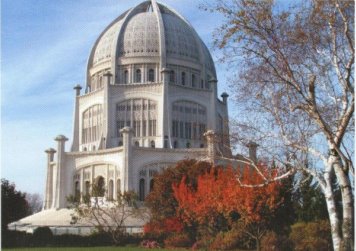 The Baha’i House of Worship in New Delhi, India commonly called the Lotus Temple is one of the marvels of modern architecture. The temple gives the impression of a half-open lotus flower afloat, surrounded by its leaves. The shining pure white marble, the majestic dome, the petals clearly standing out create a sense of grandeur and awe. It has received an average of 4.3 million visitors every year – from all nations, religions and walks of life.Since its inauguration to public worship and visits in December 1986, the Baha’i House of Worship in New Delhi, India has drawn to its portals more than 70 million visitors, making it one of the most visited edifices in the world. On an average, 8,000 to 10,000 people visit the Baha’i House of Worship each day. These visitors have admired its universal design in the form of a lotus and have been fascinated by the Teachings of the Baha’i Faith, especially its tenets of the Oneness of God, the Oneness of Religions, and the Oneness of Mankind. This ‘Lotus’ casts its benevolent glance over vast green lawns and avenues covering an expanse of 26 acres of land.
The Baha’i House of Worship in New Delhi, India commonly called the Lotus Temple is one of the marvels of modern architecture. The temple gives the impression of a half-open lotus flower afloat, surrounded by its leaves. The shining pure white marble, the majestic dome, the petals clearly standing out create a sense of grandeur and awe. It has received an average of 4.3 million visitors every year – from all nations, religions and walks of life.Since its inauguration to public worship and visits in December 1986, the Baha’i House of Worship in New Delhi, India has drawn to its portals more than 70 million visitors, making it one of the most visited edifices in the world. On an average, 8,000 to 10,000 people visit the Baha’i House of Worship each day. These visitors have admired its universal design in the form of a lotus and have been fascinated by the Teachings of the Baha’i Faith, especially its tenets of the Oneness of God, the Oneness of Religions, and the Oneness of Mankind. This ‘Lotus’ casts its benevolent glance over vast green lawns and avenues covering an expanse of 26 acres of land.
All around the lotus are walkways with beautiful curved balustrades, bridges and stairs that surround the nine pools representing the floating leaves of the lotus. It is a remarkable tabernacle of peace and beauty and an engineering feat that will set standards for centuries.Capturing the imagination with its simplicity and elegance this monument in marble is dedicated to the purpose of prayer, meditation and spiritual upliftment. From within its hallowed precincts rise in praise and glorification of the Almighty voices in unison, of Baha’is, Hindus, Muslims, Jews, Christians, Buddhists and Zoroastrians people of all castes, colors and cultures. There is no clergy in the Baha’i House of Worship, no idols, no pictures, no sermons, and no rituals. It is a place for communication between man and his Creator, God.
Thursday, May 5, 2011
The Baha'i House of Worship in India
Subscribe to:
Comments (Atom)





